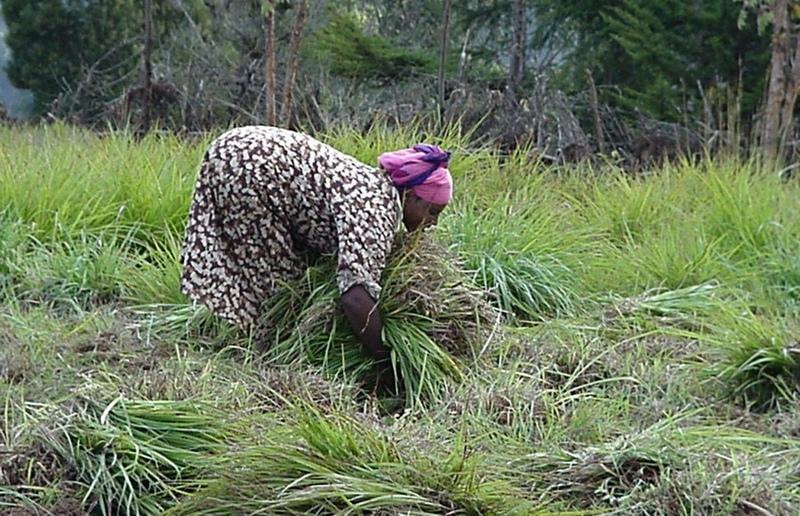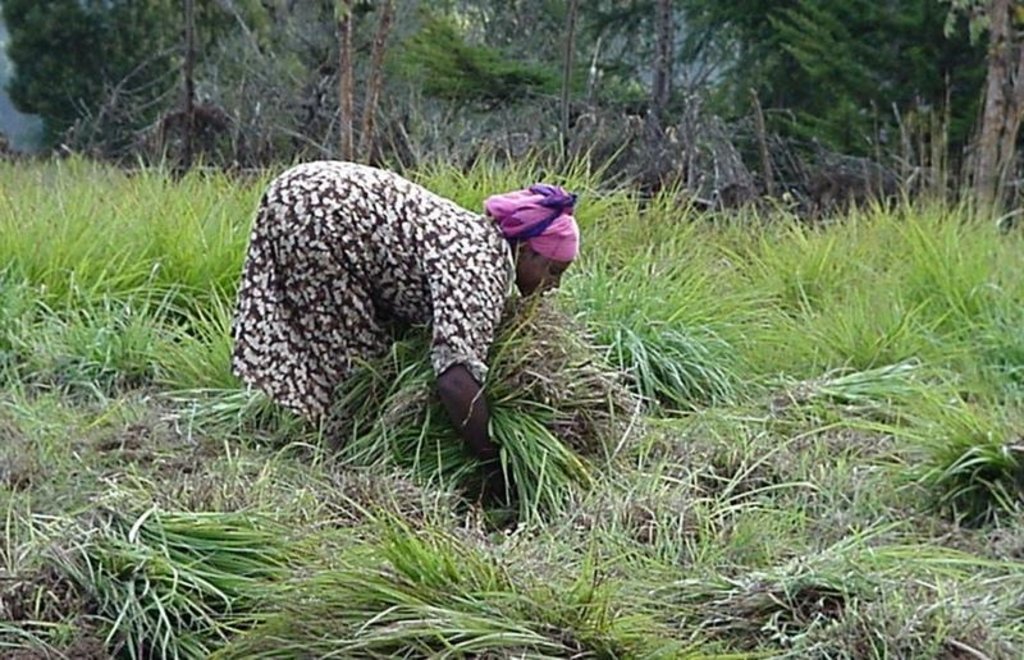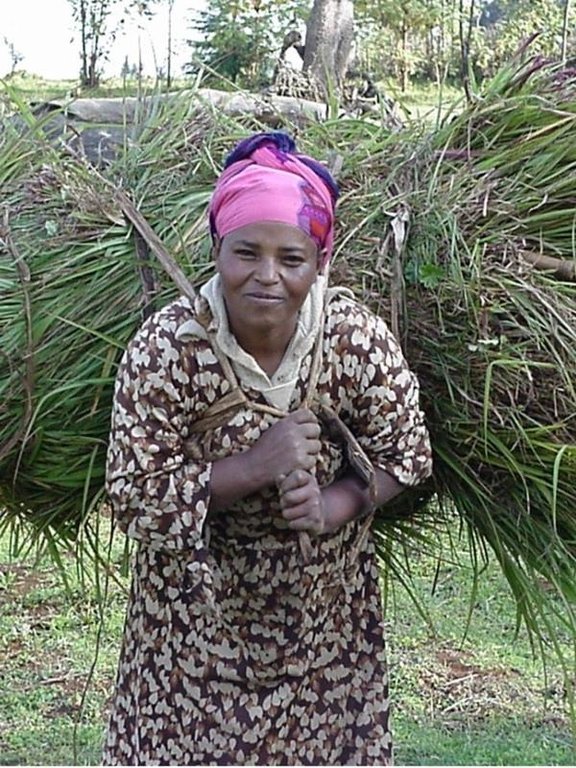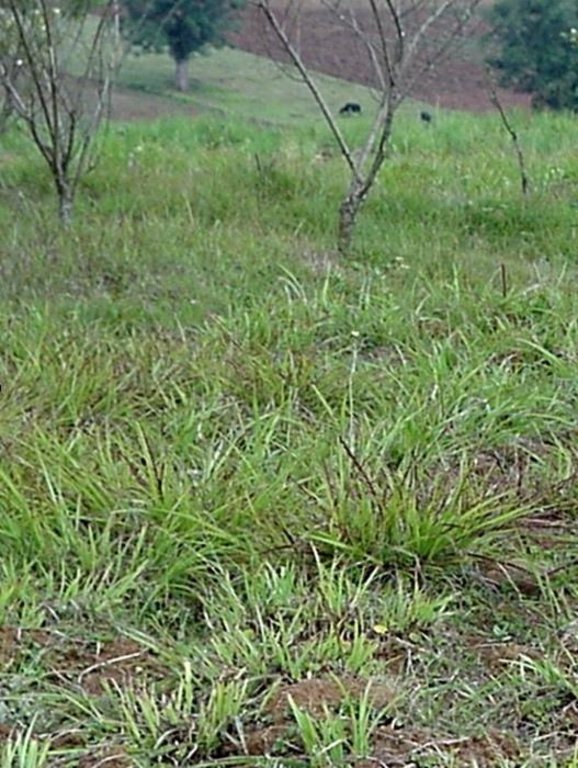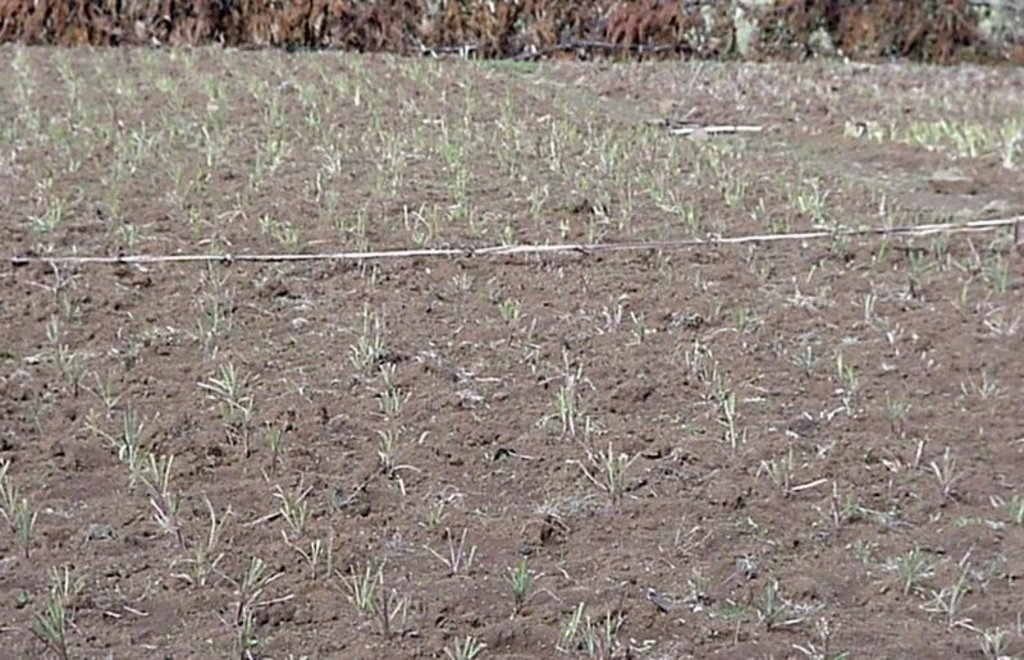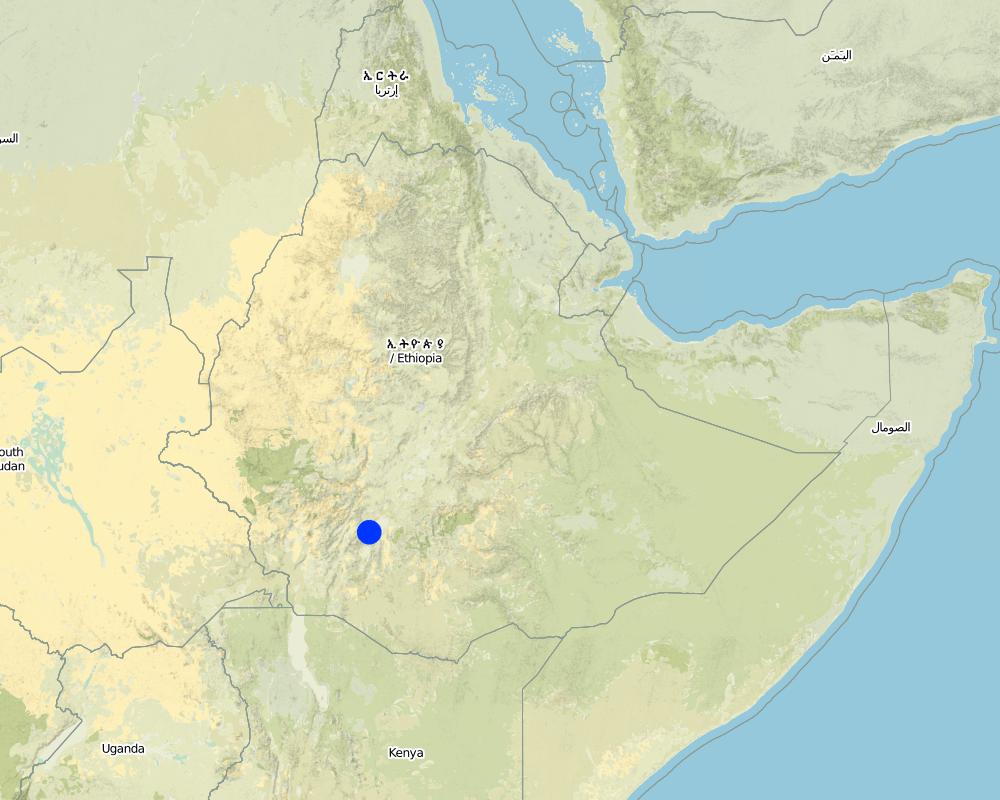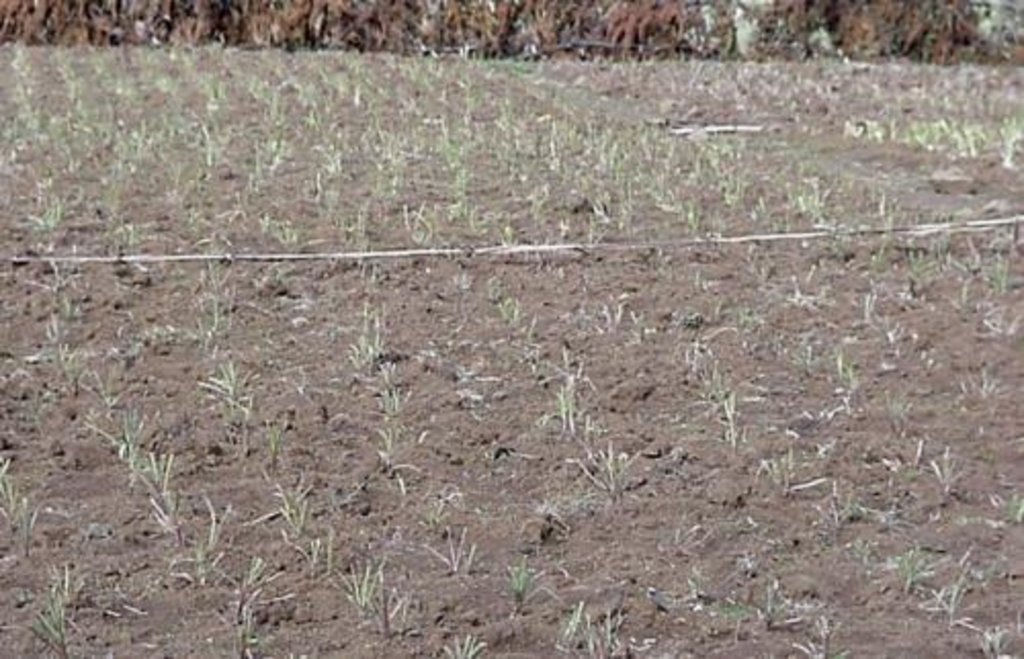Improved grazing land management [Ethiopie]
- Création :
- Mise à jour :
- Compilateur : Daniel Danano
- Rédacteur : –
- Examinateurs : Donia Mühlematter, Alexandra Gavilano, Fabian Ottiger
Gitosh masheshal
technologies_1049 - Ethiopie
Voir les sections
Développer tout Réduire tout1. Informations générales
1.2 Coordonnées des personnes-ressources et des institutions impliquées dans l'évaluation et la documentation de la Technologie
Nom du projet qui a facilité la documentation/ l'évaluation de la Technologie (si pertinent)
Book project: where the land is greener - Case Studies and Analysis of Soil and Water Conservation Initiatives Worldwide (where the land is greener)Nom du ou des institutions qui ont facilité la documentation/ l'évaluation de la Technologie (si pertinent)
FAO Food and Agriculture Organization (FAO Food and Agriculture Organization) - ItalieNom du ou des institutions qui ont facilité la documentation/ l'évaluation de la Technologie (si pertinent)
Ministry of Agriculture and Rural Development (Ministry of Agriculture and Rural Development) - Ethiopie1.3 Conditions relatives à l'utilisation par WOCAT des données documentées
Le compilateur et la(les) personne(s) ressource(s) acceptent les conditions relatives à l'utilisation par WOCAT des données documentées:
Oui
1.5 Référence au(x) Questionnaires sur les Approches de GDT (documentées au moyen de WOCAT)
2. Description de la Technologie de GDT
2.1 Courte description de la Technologie
Définition de la Technologie:
Rehabilitation of communal grazing lands, through planting of improved grass and fodder trees and land subdivision, to improve fodder and consequently livestock production.
2.2 Description détaillée de la Technologie
Description:
This case study focuses on the highly populated, humid highland regions of Ethiopia that experience serious shortages of pasture. Due to rapid population growth, communal grazing areas are increasingly being converted into cropland. This has led to enormous pressure on the little remaining grazing land, through overstocking of dairy cows and oxen, and thus overgrazing, resulting in considerably decreased productivity.
Improved grazing land management is vital to increase food security and alleviate poverty, as well as to bring environmental rewards. To address these problems, the national SWC programme in Ethiopia initiated a grazing land management project over a decade ago. Implementation of the technology includes the initial delineating of the grazing land, and then fencing to exclude open access. This is followed by land preparation, application of compost (and, if necessary, inorganic fertilizers) to improve soil fertility, then planting of improved local and exotic fodder species, including multipurpose shrubs/trees such as Leucaena sp. and Sesbania sp. and the local desho grass (Pennisetum sp.). Desho has a high nutritive value and regular cuts are ensured. It is planted by splits, which have high survival rates and establish better than grasses which are seeded. Other grass seeds, as well as legumes, including alfalfa (lucerne: Medicago sativa) and clovers in some cases, are mixed with fodder tree seeds and then broadcast.
Maintenance activities such as weeding, manuring and replanting ensure proper establishment and persistence. Fodder is cut and carried to stall-fed livestock. Once a year, grass is cut for hay, which is stored to feed animals during the dry season. Experience shows that such grazing land is best managed when individually owned and used. In the study area, the community has distributed small plots (<0.5 ha) of communal grazing land to individual users to develop, manage and use.
The overall purpose of the intervention is to improve the productivity of grazing land and control land degradation through the introduction of productive techniques and improved fodder species, which consequently improve livestock production. Commercialisation of animals and marketing of their products increases the income of farmers. The government provides technical assistance, close follow-up, and some inputs for initial establishment. Land users are trained in compost/ manure application, planting of seeds, splits and seedlings, and general maintenance.
2.3 Photos de la Technologie
2.5 Pays/ région/ lieux où la Technologie a été appliquée et qui sont couverts par cette évaluation
Pays:
Ethiopie
Région/ Etat/ Province:
Chencha
Commentaires:
Total area covered by the SLM Technology is 20 km2.
Map
×2.7 Introduction de la Technologie
Spécifiez comment la Technologie a été introduite: :
- par le biais de projets/ d'interventions extérieures
3. Classification de la Technologie de GDT
3.1 Principal(aux) objectif(s) de la Technologie
- réduire, prévenir, restaurer les terres dégradées
- préserver l'écosystème
3.2 Type(s) actuel(s) d'utilisation des terres, là où la Technologie est appliquée
Les divers types d'utilisation des terres au sein du même unité de terrain: :
Oui
Précisez l'utilisation mixte des terres (cultures/ pâturages/ arbres):
- Sylvo-pastoralisme

Terres cultivées
- Cultures annuelles
- Cultures pérennes (non ligneuses)
- Plantations d’arbres ou de buissons
Cultures annuelles - Précisez les cultures:
- légumineuses et légumes secs - autres
- cultures fourragères - autres
- cultures fourragères - luzerne
- lucerne: Medicago sativa
- local desho grass (Pennisetum sp.)
- Leucaena sp. and Sesbania sp.
Nombre de période de croissance par an: :
- 1
Précisez:
Longest growing period in days: 210 Longest growing period from month to month: March - September

Pâturages
Pâturage intensif/ production fourragère :
- Affouragement en vert/ zéro-pâturage
- Prairies améliorées
Type d'animal:
- bétail - laitier
- oxen
Commentaires:
Major land use problems (compiler’s opinion): Population growth has resulted in a substantial reduction in land holdings (<0.5 ha per family) and this in turn has led inevitably to encroachment onto communal grazing lands for cultivation. Livestock numbers on the other hand have remained unchanged, and this has led to overstocking of the few areas left. Livestock production, which accounts for 40% of the average household income, is thus reduced and farmers’ income declines correspondingly.
3.3 Est-ce que l’utilisation des terres a changé en raison de la mise en œuvre de la Technologie ?
Est-ce que l’utilisation des terres a changé en raison de la mise en œuvre de la Technologie ?
- Oui (Veuillez remplir les questions ci-après au regard de l’utilisation des terres avant la mise en œuvre de la Technologie)
Les divers types d'utilisation des terres au sein du même unité de terrain: :
Oui
Précisez l'utilisation mixte des terres (cultures/ pâturages/ arbres):
- Sylvo-pastoralisme

Terres cultivées
- Cultures annuelles
- Cultures pérennes (non ligneuses)
- Plantations d’arbres ou de buissons
Cultures annuelles - Précisez les cultures:
- légumineuses et légumes secs - autres
- cultures fourragères - luzerne
- lucerne: Medicago sativa
- local desho grass (Pennisetum sp.)
- Leucaena sp, Sesbania sp.

Pâturages
Pâturage intensif/ production fourragère :
- Affouragement en vert/ zéro-pâturage
3.4 Approvisionnement en eau
Approvisionnement en eau des terres sur lesquelles est appliquée la Technologie:
- pluvial
3.5 Groupe de GDT auquel appartient la Technologie
- fermeture de zones (arrêt de tout usage, appui à la réhabilitation)
- Amélioration de la couverture végétale/ du sol
- amélioration des variétés végétales, des races animales
3.6 Mesures de GDT constituant la Technologie

pratiques agronomiques
- A2: Matière organique/ fertilité du sol

pratiques végétales
- V1: Couverture d’arbres et d’arbustes

modes de gestion
- M2: Changement du niveau de gestion / d'intensification
Commentaires:
Main measures: agronomic measures, vegetative measures, management measures
Type of agronomic measures: manure / compost / residues
Type of vegetative measures: scattered / dispersed
3.7 Principaux types de dégradation des terres traités par la Technologie

érosion hydrique des sols
- Wt: perte de la couche superficielle des sols (couche arable)/ érosion de surface
- Wg: ravinement/ érosion en ravines

dégradation chimique des sols
- Cn: baisse de la fertilité des sols et réduction du niveau de matière organique (non causée par l’érosion)

dégradation biologique
- Bc: réduction de la couverture végétale
- Bs: baisse de la qualité et de la composition/ diversité des espèces
Commentaires:
Main type of degradation addressed: Wt: loss of topsoil / surface erosion, Wg: gully erosion / gullying, Cn: fertility decline and reduced organic matter content, Bc: reduction of vegetation cover, Bs: quality and species composition /diversity decline
3.8 Prévention, réduction de la dégradation ou réhabilitation des terres dégradées
Spécifiez l'objectif de la Technologie au regard de la dégradation des terres:
- réduire la dégradation des terres
4. Spécifications techniques, activités, intrants et coûts de mise en œuvre
4.1 Dessin technique de la Technologie
Spécifications techniques (associées au dessin technique):
Splits of desho grass (Pennisetum pedecillatum) are plantet in lines, using a hand hoe, after good seedbed preparation. Spacing between grass splits is 10 x 10 cm. The white line is a boundary between two households' plots (width of plot: 15-20 m). Trees are planted at rirregular spacing (around 5 m apart), layout is not specified.
Technical knowledge required for field staff / advisors: high
Technical knowledge required for land users: moderate
Main technical functions: improvement of ground cover, control of dispersed runoff, increase in soil fertility
Secondary technical functions: increase of infiltration, improvement of soil structure, control of concentrated runoff
Manure / compost / residues
Material/ species: animal manure, leaf litter, wood ash, soil
Scattered / dispersed
Vegetative material: T : trees / shrubs, G : grass
Trees/ shrubs species: Leucaena sp., Sesbania sp.
Grass species: Desho grass (Pennisetumsp.), alfalfa (lucerne: Medicago sativa)
Other type of management: change of intensity level
Auteur:
Daniel Danano
4.3 Activités de mise en place/ d'établissement
| Activité | Calendrier des activités (saisonnier) | |
|---|---|---|
| 1. | Delineation of the area to be conserved and establishment of a fence | before the onset of rain |
| 2. | Subdivision of communal land into individual plots of 0.3–0.5 ha. | |
| 3. | Planting material preparation in nurseries: grass splits (desho) | |
| 4. | Good seedbed preparation | (at the onset of the rains). |
| 5. | Planting of grass splits and tree/shrub species in lines; sowing of grass | (early in the rainy season). |
| 6. | Weeding. |
4.4 Coûts et intrants nécessaires à la mise en place
| Spécifiez les intrants | Unité | Quantité | Coûts par unité | Coût total par intrant | % du coût supporté par les exploitants des terres | |
|---|---|---|---|---|---|---|
| Main d'œuvre | Labour | ha | 1,0 | 320,0 | 320,0 | 100,0 |
| Equipements | Animal traction | ha | 1,0 | 17,0 | 17,0 | 100,0 |
| Equipements | Tools | ha | 1,0 | 5,0 | 5,0 | 50,0 |
| Matériel végétal | Seedlings | ha | 1,0 | 5,0 | 5,0 | |
| Matériel végétal | Grass splits (tillers) | ha | 1,0 | 450,0 | 450,0 | 100,0 |
| Engrais et biocides | Fertilizer | ha | 1,0 | 60,0 | 60,0 | 100,0 |
| Engrais et biocides | Compost/manure | ha | 1,0 | 140,0 | 140,0 | 100,0 |
| Matériaux de construction | Deadwood for fencing | ha | 1,0 | 55,0 | 55,0 | 100,0 |
| Coût total de mise en place de la Technologie | 1052,0 | |||||
| Coût total de mise en place de la Technologie en dollars américains (USD) | 1052,0 | |||||
Commentaires:
Duration of establishment phase: 12 month(s)
4.5 Activités d'entretien/ récurrentes
| Activité | Calendrier/ fréquence | |
|---|---|---|
| 1. | Compost/manure preparation. Material used includes animal manure, | / initial establishment |
| 2. | Compost application | / one month after planting, initial establishment |
| 3. | Cut-and-carry, to stall-fed animals, begins when fodder is ready. | (after 2–3 months growth) /2 -4 times |
| 4. | A final cut for hay is taken early in the dry season when the grass has matured well. | (end of October) / |
| 5. | Weeding | /each year. |
| 6. | Compost/manure application, mixed with soil, during seedbed preparation (only where plants have died and need replacement and fertilisation). | |
| 7. | Enrichment planting and gap filling | after a year / repeated each year. |
4.6 Coûts et intrants nécessaires aux activités d'entretien/ récurrentes (par an)
| Spécifiez les intrants | Unité | Quantité | Coûts par unité | Coût total par intrant | % du coût supporté par les exploitants des terres | |
|---|---|---|---|---|---|---|
| Main d'œuvre | Labour | ha | 1,0 | 35,0 | 35,0 | 100,0 |
| Equipements | Tools | ha | 1,0 | 4,0 | 4,0 | 100,0 |
| Matériel végétal | Seeds | ha | 1,0 | 30,0 | 30,0 | 100,0 |
| Matériel végétal | Seedlings | ha | 1,0 | 2,0 | 2,0 | 100,0 |
| Engrais et biocides | Fertilizer | ha | 1,0 | 15,0 | 15,0 | 100,0 |
| Engrais et biocides | Compost/manure | ha | 1,0 | 35,0 | 35,0 | 100,0 |
| Matériaux de construction | Deadwood for fencing | ha | 1,0 | 5,0 | 5,0 | 100,0 |
| Coût total d'entretien de la Technologie | 126,0 | |||||
| Coût total d'entretien de la Technologie en dollars américains (USD) | 126,0 | |||||
Commentaires:
Seedlings are given by the government for initial establishment. For further extension of area and replanting, the
land users set up their own nurseries. After 2-3 years maintenance costs decrease substantially as the grass cover closes up and maintenance activities such as replanting/enrichment planting and compost application are reduced or cease. The local daily wage is about US$ 0.70 a day, but varies depending on the intensity of the work. In this calculation the standard rate has been applied.
Farmers usually cannot afford fertilizers. Milk production compensates for some of the high investment costs (previously, production was low).
5. Environnement naturel et humain
5.1 Climat
Précipitations annuelles
- < 250 mm
- 251-500 mm
- 501-750 mm
- 751-1000 mm
- 1001-1500 mm
- 1501-2000 mm
- 2001-3000 mm
- 3001-4000 mm
- > 4000 mm
Zone agro-climatique
- humide
Local term: wett dega
5.2 Topographie
Pentes moyennes:
- plat (0-2 %)
- faible (3-5%)
- modéré (6-10%)
- onduleux (11-15%)
- vallonné (16-30%)
- raide (31-60%)
- très raide (>60%)
Reliefs:
- plateaux/ plaines
- crêtes
- flancs/ pentes de montagne
- flancs/ pentes de colline
- piémonts/ glacis (bas de pente)
- fonds de vallée/bas-fonds
Zones altitudinales:
- 0-100 m
- 101-500 m
- 501-1000 m
- 1001-1500 m
- 1501-2000 m
- 2001-2500 m
- 2501-3000 m
- 3001-4000 m
- > 4000 m
Commentaires et précisions supplémentaires sur la topographie:
Landforms: Also hill slopes (ranked 2) and foot slopes (ranked 3)
Slopes on average: Also hilly (ranked 2) and rolling (ranked 3)
5.3 Sols
Profondeur moyenne du sol:
- très superficiel (0-20 cm)
- superficiel (21-50 cm)
- modérément profond (51-80 cm)
- profond (81-120 cm)
- très profond (>120 cm)
Texture du sol (de la couche arable):
- moyen (limoneux)
Matière organique de la couche arable:
- moyen (1-3%)
- faible (<1%)
Si disponible, joignez une description complète du sol ou précisez les informations disponibles, par ex., type de sol, pH/ acidité du sol, capacité d'échange cationique, azote, salinité, etc.
Soil fertility: Medium (ranked 2) and low (ranked 3)
Soil drainage/infiltration: Good
5.6 Caractéristiques des exploitants des terres appliquant la Technologie
Orientation du système de production:
- subsistance (auto-approvisionnement)
Revenus hors exploitation:
- 10-50% de tous les revenus
Individus ou groupes:
- individu/ ménage
Indiquez toute autre caractéristique pertinente des exploitants des terres:
Off-farm income specification: source of off-farm income includes petty trade and weaving
5.7 Superficie moyenne des terres utilisées par les exploitants des terres appliquant la Technologie
- < 0,5 ha
- 0,5-1 ha
- 1-2 ha
- 2-5 ha
- 5-15 ha
- 15-50 ha
- 50-100 ha
- 100-500 ha
- 500-1 000 ha
- 1 000-10 000 ha
- > 10 000 ha
Cette superficie est-elle considérée comme de petite, moyenne ou grande dimension (en se référant au contexte local)?
- petite dimension
Commentaires:
Average area of land owned or leased by land users applying the Technology:
1-2 ha: Ranked 1
< 0.5 ha, 0.5-1 ha: Both ranked 2
2-5 ha: Ranked 3
5.8 Propriété foncière, droits d’utilisation des terres et de l'eau
Propriété foncière:
- état
Droits d’utilisation des terres:
- accès libre (non organisé)
- individuel
6. Impacts et conclusions
6.1 Impacts sur site que la Technologie a montrés
Impacts socio-économiques
Production
production fourragère
qualité des fourrages
production animale
Commentaires/ spécifiez:
Increase in livestock production
production de bois
diversité des produits
Commentaires/ spécifiez:
Increase in the availability of livestock products on the market
surface de production
Commentaires/ spécifiez:
Decrease in size of grazing plots due to land fragmentation
Revenus et coûts
revenus agricoles
Commentaires/ spécifiez:
Selling animals and their products
charge de travail
Autres impacts socio-économiques
Dependence on incentives
Commentaires/ spécifiez:
Initially high. Incentives such as free seeds, seedlings, tools
Impacts socioculturels
situation sanitaire
Commentaires/ spécifiez:
Improvement in household diets (milk)
institutions communautaires
institutions nationales
Commentaires/ spécifiez:
Increased willingness
connaissances sur la GDT/ dégradation des terres
Impacts écologiques
Sols
humidité du sol
couverture du sol
perte en sol
Autres impacts écologiques
Biodiversity
Soil fertility
6.2 Impacts hors site que la Technologie a montrés
flux des cours d'eau fiables et stables en saison sèche
inondations en aval
envasement en aval
Sediment transport
6.4 Analyse coûts-bénéfices
Quels sont les bénéfices comparativement aux coûts de mise en place (du point de vue des exploitants des terres)?
Rentabilité à court terme:
légèrement positive
Rentabilité à long terme:
très positive
Quels sont les bénéfices comparativement aux coûts d'entretien récurrents (du point de vue des exploitants des terres)?
Rentabilité à court terme:
positive
Rentabilité à long terme:
très positive
6.5 Adoption de la Technologie
Commentaires:
50 land user families have adopted the Technology with external material support
Comments on acceptance with external material support: 50 households who accepted the technology in the initial phase, did so with incentives. They were provided with planting materials (seeds, seedlings, grass splits) and hand tools.
There is a strong trend towards spontaneous adoption of the Technology
Comments on adoption trend: The rate of spontaneous adoption is very high. At present over 500 households have taken up the technology and the total area covered is about 20 km2.
6.7 Points forts/ avantages/ possibilités de la Technologie
| Points forts/ avantages/ possibilités du point de vue de l'exploitant des terres |
|---|
| Increased national income due to export of animals and their products. |
| Points forts/ avantages/ possibilités du point de vue du compilateur ou d'une autre personne ressource clé |
|---|
|
Availability of fodder (grass, hay, shrubs) in sufficient quantities, and all year round How can they be sustained / enhanced? Increase the area under such development. |
|
Reduction in soil loss and land degradation How can they be sustained / enhanced? Maintain adequate cover by planting more grass. |
|
Introduction of high yielding species as well as increase in land productivity and livestock production How can they be sustained / enhanced? ntroduce bigger variability of quality species and improve maintenance activities such as weeding and cultivation. |
|
Improved diet: livestock by-products such as milk, butter and cheese are essential food items required by the households How can they be sustained / enhanced? Keep on increasing/improving quantity/quality of livestock feed. |
|
Increased income through commercialisation and marketing of animals and their by-products. Meets financial needs for paying taxes, school fees, clothes etc. |
| Rehabilitation of communal grazing lands is both a technical and social challenge. Here is a promising example from Ethiopia that is spreading quickly. The key is subdivision of land into individual plots where cut-and-carry of grass and stall-feeding of livestock is practiced. This is only a possible option, however, where rainfall is favourable. land use rights: individual for cropland, open access (unorganised/communally used) for grazing land, except for the case study area where the rights to rehabilitated grazing land are given to individuals |
6.8 Faiblesses/ inconvénients/ risques de la Technologie et moyens de les surmonter
| Faiblesses/ inconvénients/ risques du point de vue du compilateur ou d'une autre personne ressource clé | Comment peuvent-ils être surmontés? |
|---|---|
| At the initial stage of establishment it is very labour intensive | Use of improved land preparation methods such as oxen ploughing. |
| Substantial cash for inputs, particularly seedlings, is required | Produce seedlings of improved species and making compost in backyards. |
| Needs high fertilizer application | Focus more on organic fertilizers. |
| High pressure on remaining grazing areas | Keep animals in stall (stable) or park, at least part of the day and during the night, and introduce cut-and-carry more widely. |
7. Références et liens
7.1 Méthodes/ sources d'information
7.2 Références des publications disponibles
Titre, auteur, année, ISBN:
Adane Dinku, Chencha Wereda, Natural Resources Management Annual Report,. 2001 and 2002.
Liens et modules
Développer tout Réduire toutLiens
Aucun lien
Modules
Aucun module trouvé


